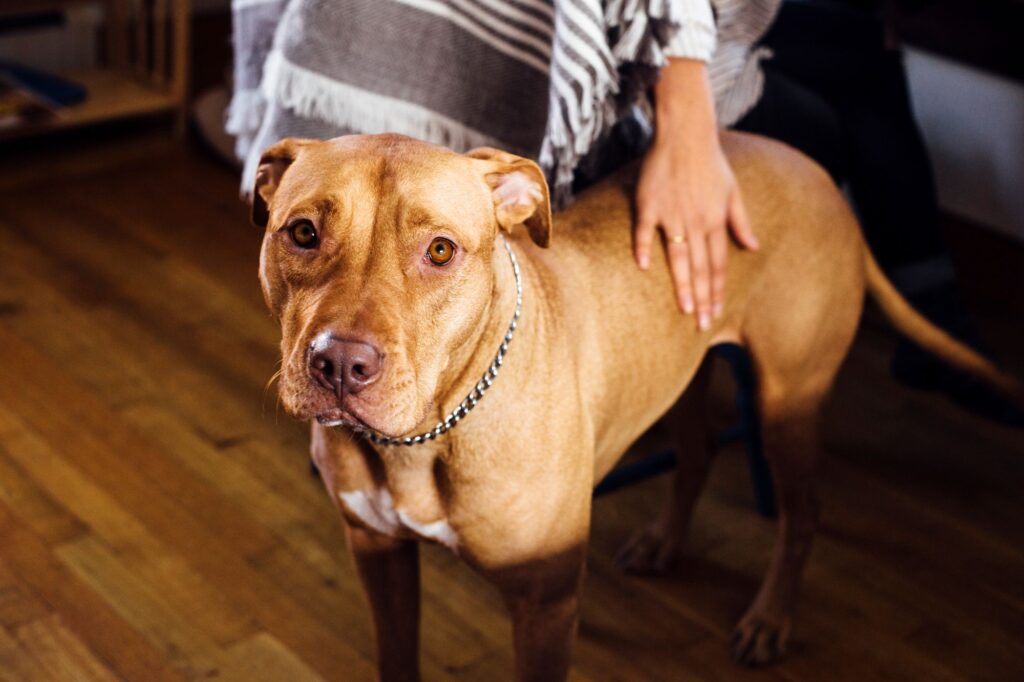Can you really restrict big dogs in an HOA? Plus other common pet policies
Dogs are treated like (or better than) family in pet-friendly households. But not everyone feels such affection for these four-legged friends.
Unfortunately, it’s usually bad owner behavior, and not bad dog behaviour that causes pet-related conflicts within HOA communities.
Pets are one of the main issues that HOAs encounter. It’s usually dog waste that creates problems, but complaints about barking, and aggressive behavior, are also received.
That has led some associations to ask if they can ban dogs, or at least big dogs, from the community.
Though the matter is more complicated than many would think, it can be hard for a community to enforce this type of rule.
Table of contents
- Can HOAs restrict all pets?
- Can HOAs restrict big dogs?
- Can HOAs restrict certain breeds?
- Other common HOA pet policies
- What about service dogs?
- What about emotional support animals?
- Solutions to curb poor owner behavior
Can HOAs restrict all pets?
Yes, but it is not recommended. While this type of rule eliminates any grey areas, outright bans on pets are hard to enforce and can face challenges under the Fair Housing Act (FHA).
California HOAs cannot try to enforce such a rule. According to California Civil Code Section 4715, “No governing documents shall prohibit the owner of a separate interest within a common interest development from keeping at least one pet within the common interest development, subject to reasonable rules and regulations of the association.”
Under this law, a pet means any domesticated bird, cat, dog, aquatic animal kept within an aquarium, or other animal as agreed to between the association and the owner.
Can HOAs restrict big dogs?
Yes. Unless there are laws that state otherwise, HOAs can place restrictions within pet policies. Restrictions may target the size, total number, or breed of pets.
These limitations must be stated in the community’s governing documents, and are intended to maintain harmony and safety for all residents.

If a size limit exists, it is usually in the form of a weight limit. For example, owners and residents cannot have dogs that weigh more than 50 pounds.
Why restrict large dogs? Some think it’s because they expel more waste, creating more mess. Others who are concerned about safety may argue that bigger dogs are harder to control, and have the potential to inflict greater harm.
Though these arguments are valid, there is a growing belief that it makes more sense to regulate behavior as opposed to size or breed. After all, good dogs come in all shapes and forms.
Can HOAs restrict certain breeds?
Yes, and breed-specific legislation (BSL) exists in multiple states. For example, in Arkansas, Indiana, Iowa, and Kentucky, pit bulls are still subject to legal restrictions.
Other common HOA pet policies
Pet polices differ depending on the needs of the association. The goal is to make the community a happy and safe place for everyone. That can be a tough thing to do, but HOAs use some of these additional policies to try and strike that balance:
- Limit on the number of pets allowed per household. Often, that number is 2 or 3
- Reasonable restrictions when it comes to the type of pet that can be housed. You might be surprised by the types of animals people have tried to keep as pets
- Leash, control, and common-area rules. This is very important to promote and enforce
- Waste cleanup and sanitation. Include information about what happens for noncompliance so that owners are aware of the consequences
- Noise, nuisance, and aggressive behavior. Define what counts as a “nuisance” or “aggressive behavior,” as well as what happens if a pet has been aggressive around other members (warnings, fines, removal)
- Clearly identify any pet-free zones or restricted areas, including pools, playgrounds or the clubhouse
- Clearly identify any amenities or infrastructure designed for pets (dog parks, waste stations)
- Clearly list registration, identification, and vet record requirements. Some HOAs require registration, proof of vaccination and tags
- Details about liability, insurance, and indemnification. State whether pet owners are responsible for costs associated with damage, injury, or biting
Ensure that policies are up to date and easy to access. Storing them on the HOA’s website allows owners to review them at any time, from anywhere.
A quick note about grandfathering
While consistency is important when it comes to enforcing any community rules, sometimes, things change.
Rules and policies need to be updated from time to time as circumstances and expectations change. However, if implementing those changes could have a negative and serious impact on existing members, the HOA board may choose to include a grandfather clause.
This means the new or revised rules do not apply to existing members unless their situation changes.
In the context of pets, an HOA may decide to place a limit on the number of pets one household can have at any given time. Let’s say that number is 2. However, a small group of owners already have 3 pets.
Instead of asking those people to find a new home for one of the pets, the HOA will use a grandfather clause that exempts them from the new rule. They can keep all of their existing pets without issue.
However, these owners are not permitted to have more pets, and if one of the pets passes away, they cannot get a new one. Once their situation changes, in this case, a pet passes away, they must follow the new rules.
Eventually, the board will be able to phase out the grandfather clause once the change or amendment is enforceable to all members.
What about service dogs?
The Fair Housing Act protects people from discrimination when renting, buying, or financing a house, and when pursuing other housing-related activities. Under this federal law, people with disabilities can request reasonable accommodations from their associations. This includes the right to have a service animal.
HOAs cannot enforce breed or size restrictions on a service animal. However, the HOA still has the right to require that the owners of these animals follow the rules. That includes abiding by leash regulations, and following through with waste clean-up.
What about emotional support animals?
Emotional support animals are more complicated and will be addressed in another article. However, since a support animal is not a pet, an owner may be entitled to have the animal, even if the HOA has an established no-pet policy.
Associations cannot refuse to make reasonable accommodations when such accommodations may be necessary to afford an owner with a disability an opportunity to use and enjoy their home.
If an owner is requesting to keep a unique type of animal, for example, a pig, the burden is on the requester to demonstrate a disability-related therapeutic need for the animal. Associations should not rush to deny the request, but instead seek to gain credible information regarding the request.
Solutions to curb poor owner behavior
Pet issues are not always easy to solve. Many communities struggle with pet waste issues simply because incidents occur quickly, and it can be very hard to prove that someone didn’t clean up when they should have.
If general reminders and warning letters aren’t working, it might be time to try a more something more effective.
Install waste disposal stations
Having a place to dispose of waste will encourage owners to pick up after their pets during walks. If possible, provide bags at the stations so that owners really have no excuse for not cleaning up.
Enforce the rules whenever possible
If management or a neighbor knows who isn’t picking up after their pet, the association should notify the owner. Follow the association’s enforcement process to ensure fairness and consistency. Fines are generally a good way to get owners to change their behavior.
DNA testing
If pet waste is becoming the community’s main pain point, there are companies out there that will test feces and provide DNA results to the association. This is an expensive, but effective way to get owners to clean up after their pets.
The big catch is that dog owners must first provide the HOA with a DNA sample from their pets. Typically, all that is needed is a cheek swab, but some owners might be reluctant to participate in this program.
HOAs will also need to determine if testing costs will be charged back to the owners, or if this is something that comes out of the association’s budget.



